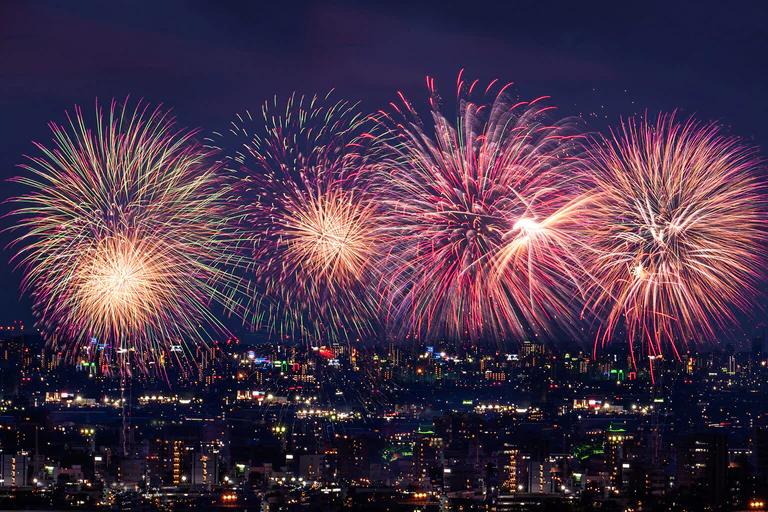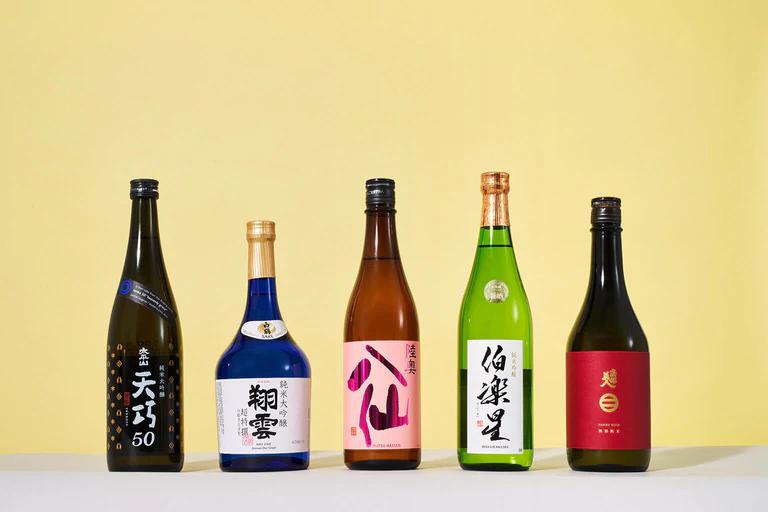The “ochoko” is a traditional drinking cup for sake. It comes in various materials, which can subtly influence the flavor of sake. Though the ochoko is but one of several traditional sake cup options, it may be the most commonly used and well known amongst them. This article will explore the ochoko’s humble pre-sake origins, different materials used to make ochoko, and how those materials affect the experience of drinking sake.
What is an ochoko?
The ochoko is one of the most popular sake cups. It is a small, round cup that can be made from various materials. An ochoko can hold anywhere from 18 milliliters-72 milliliters of liquid. In size, they may resemble a shot glass. Unlike a shot glass, the ochoko’s intended function is for sipping sake rather than gulping it down. Ochoko are appropriate for several occasions of sake drinking, whereas other styles of sake cups may indicate more formality or ceremonial use. Ochoko also have great utility in serving sake that has been either warmed or chilled.
A brief history of the ochoko
There are a few theories regarding the origins of the ochoko’s name. One is that “ochoko” derives from another word meaning “small or unpretentious thing.” Another theory is that “ochoko” came from the words “choku” or “chotto,” meaning “just a little.”
Ochoko were not always used for drinking sake! Prior to the Edo period (1603-1868), ochoko were used as tabletop vessels for sauces and vinegars. People started to favor drinking out of ochoko when sake began to be made with higher alcohol content during the Edo period. Ochoko make great sake cups as they are perfect for sipping just a little at a time rather than consuming sake too quickly.
What is the bullseye pattern at the bottom of the ochoko?
The “janome” (or “kikichoko”) is a porcelain or ceramic ochoko with a blue bullseye pattern printed on the inside of the cup. “Janome” means snake eye, which is represented by the bullseye. Sake professionals and sommeliers use janome to examine the color of sake and its gloss. The white parts of the cup allow the color of sake to be seen against the contrast of the blue rings. It’s unlikely that this kind of ochoko will be used to serve sake at a restaurant or bar. Despite this, the snake eye pattern has been made recognizable and iconic by its abundant use in branding within the sake industry.
5 types of material and how each affects taste
Ochoko can be made from several different materials. Each material can have a subtle influence on the sake by affecting the aroma, visual experience, or even the temperature at which the sake can be served. Below, we will explain each material and what kind of sake is best suited for each.
Ceramic
Ceramic ochoko can have a sweetening and softening effect on sake. The rounded edges of these cups soften the experience of sipping as well. Yamahai and junmai sake make great candidates for ceramic ochoko, as the material lends itself to sake with deep flavors, and can comfortably hold warm and hot sake. Drinking warm sake from ceramic ochoko can also help the sake retain its warmth if the ochoko is lightly pre-warmed.
Porcelain
Porcelain ochoko are versatile sake cups that can be used for both warm and cold sake, depending on the thickness of the cup. The lightweight nature of porcelain makes for a delicate sake drinking experience. Similar to ceramic ochoko, porcelain can help soften the flavor of sake.
The Ultra Thin Cup Starry Night will elevate your sake drinking with its lightweight porcelain construction. Crafted with a thin rim, this cup will give you a lighter and drier finish from your sake. The combination of visual aesthetic and lightweight feel will make you feel as though you are drinking on the clouds among the stars.
Glass
Cold, fruity and light-bodied sake such as ginjo and daiginjo taste excellent in glass. Clear glass ochoko are suitable for those who like to observe the color of their sake. Colored glass vessels also make a great option for those wanting something more ornate or visually elevated. Warm and hot sake are not recommended for glassware due to the possibility of breakage.
Metal
It is believed that metal ochoko contain ions that affect the flavor of sake. Though there is not sufficient evidence to prove this, it is a commonly expressed belief. Specifically, tin is believed to make sake more mellow. Metal ochoko also sustain the coldness of sake well. Cold, bold and strongly flavored sake will work best in metal ochoko.
Wood and lacquer
Wooden sake cups may impart a subtle aroma. This can be further enhanced by enjoying warm sake in a wooden ochoko. Aromas such as cedar can help soften the flavor of bold sake. Wooden ochoko would make a great choice for those wanting to amplify the flavor of “taru sake” (sake stored in wooden vats), or those wishing for a more tactile experience.
Lacquerware in Japanese cuisine has historically represented prestige and formality. For this reason, other types of sake cups such as lacquer sakazuki are used for ceremonial purposes. Presenting a high-end sake in a beautifully lacquered ochoko can also add a touch of refinement to your experience.
How to serve and drink sake with ochoko
Drinking sake with ochoko provides a fun opportunity to observe Japanese drinking customs. Ochoko are often accompanied with a “tokkuri,” a carafe from which the sake is poured. Tokkuri make especially useful vessels for drinking warmed sake. Tokkuri are not always necessary for cold sake, but may be a good idea if your bottle is too large for the dinner table or drinking space.
Sake should always be poured for others, and never poured for oneself. When receiving a pour of sake into your ochoko, use one hand to hold the ochoko and the other to stabilize the cup. Though two hands might seem gratuitous for a small cup, it remains customary as a sign of respect. The same principle applies to pouring sake for others as well. When pouring into someone else’s ochoko, use your right hand to hold the tokkuri and pour while your left hand supports and stabilizes the tokkuri. Head to our Sake Guide for further reading on how to drink and serve sake.
3 recommendations for ochoko on Tippsy
Tippsy has a fun curation of ochoko and other sake ware available for you to browse! Here are three examples for you to check out.
“Shofukuhai” Fujisan Cold Sake Glass
The “Shofukuhai” Fujisan Cold Sake Glass Set will whisk you away to snowy mountain peaks as you drink refreshing, cold sake. Made from pink and blue glass, these are perfect for enjoying light and fruity sake. The wide rim of the cup also provides plenty of room for aroma and a long, sweet finish.
“Fubuki” Sake Set
The Fubuki Sake Set makes for a fun and casual drinking experience. The slight opaqueness of the glassware lends itself to drinking nigori sake — or whichever cold sake you desire. The set is available in either pink or blue gradient designs, and comes with a handbasket for convenient serving.
Ultra Thin Cup Gold and Silver Spiral
The Ultra Thin Cup Gold and Silver Spiral glass is thin, lightweight and made of porcelain. Its simple yet shimmery design is perfect for showcasing an elegant, and perhaps higher-end cold sake. It has a thin open rim, which can open up the aromatics with a light and dry finish.
The ochoko is half full
Whether it’s in glass, porcelain or metal, it is always a good day when sake is on the table. Ochoko provide several different ways to optimize the sake drinking experience. I hope this article has encouraged you to experiment and consider how sake interacts with its vessel. If you know someone whose glass is half empty, do the customary thing and pour them some sake. (Check out our recommendations for best bottles for beginners if you need help choosing.) Cheers!
Resources
Ayvazyan, A. “Ochoko: The Best Sake Glass Brilliant History!” Sakuraco, 2023.
https://sakura.co/blog/ochoko-the-best-sake-glass-brilliant-history/
“Different Types of Japanese Sake Cups and Their Advantages.” Musubi Kiln Journal, 2021.
https://journal.musubikiln.com/different-types-of-japanese-sake-cups-and-their-advantages/
LeBlanc, S. “Choose the Best Cups to Elevate Your Sake Game.” SAKETIMES, 2018.
https://en.sake-times.com/how-to-drink/best_sake_cups
Lord, C. “What Are Ochoko? 6 Things to Know About Japanese Sake Cups.” Japan Objects, 2023.
https://japanobjects.com/features/ochoko
Sullivan, T. “Janome | 蛇の目” Urban Sake.
https://www.urbansake.com/sake-101/sake-glossary/janome/
Smith, B. “The Choko Sake Cup Guide.” The Japanese Bar, 2023.
https://thejapanesebar.com/sake/choko-ochoko/
“The Selection of Sake Vessels (Pottery, Glass, Lacquer, Etc.) to Enjoy Sake.” Sake Talk.
https://www.sake-talk.com/sake-selection-vessels-pottery-glass-lacquer/













